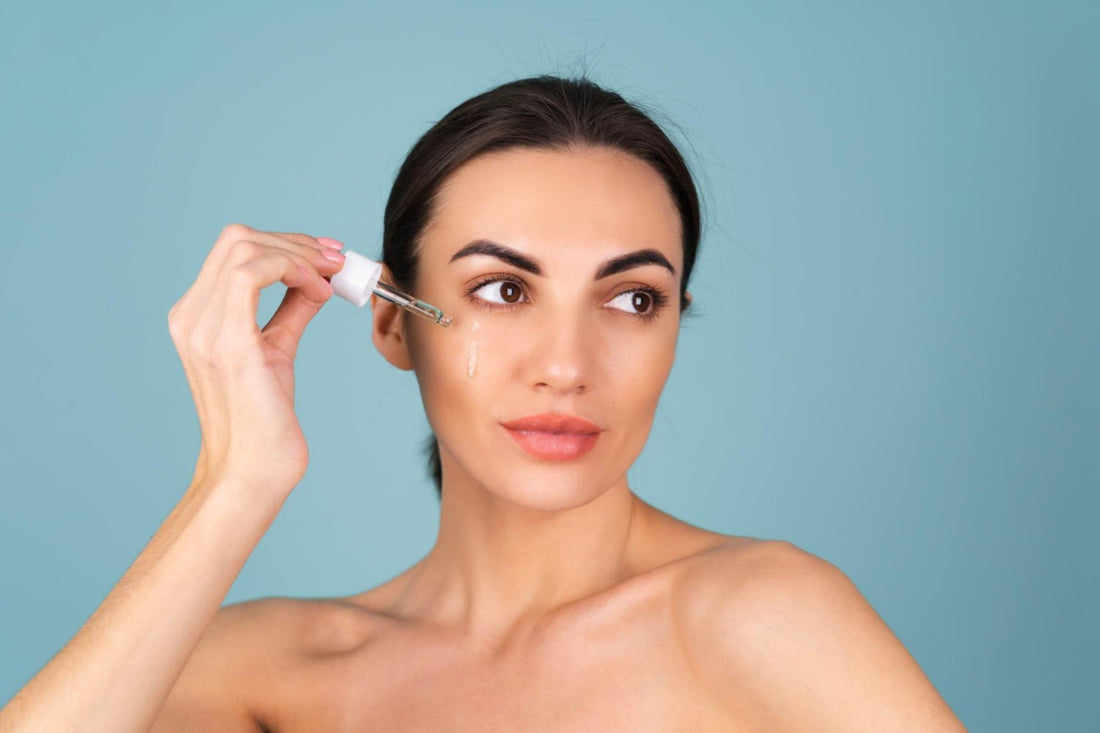Wondering if your skin needs serum or facial oil, and when to use each one? Read this for answers to all your questions!
When optimising their skincare routine, one question that people often ask is: What is the difference between serum and oil? Admittedly, these two skincare products are similar in many ways, but each has its own advantages and disadvantages. They can be used separately or layered to work together.
Are you wondering how to add them to your skincare routine? First, you need to know the difference between serum and oil. And, whether you need to use both.
What is a serum?

A serum acts like a supplement for your skin. It is a lightweight, concentrated liquid that penetrates deep to deliver active ingredients like peptides, antioxidant-rich vitamins, and glycolic acids into your skin for more targeted results. Serums can help you correct various skin concerns, such as an uneven skin tone or texture and dull skin. They are usually water-based and contain light moisturising ingredients like hyaluronic acid and ceramides. But, they can’t replace your moisturisers.
They are designed primarily to deliver active ingredients deep within your skin. It is vital to top them up with a hydrating moisturiser to lock in all the good stuff. Serums come in a variety of textures, ranging from thin and watery to thicker and gel-like. Based on these differences in viscosity and formula, you can choose a serum for your skin type or concern.
What is facial oil?

Recently, facial oils have become immensely popular. If you have dehydrated skin or a compromised skin barrier, facial oils are a godsend for you. They are designed to protect your skin from changes in weather/temperature, moisturise and soften your skin, nourish your skin barrier, and address several skin concerns such as dryness and dullness.
A major difference between serum and oil is their texture. Facial oils have rich, emollient formulas, typically heavier than serums. Another difference between serums and oils is that oil molecules are much larger and serve to penetrate only the outermost layers of the skin. This is why, for best results, you need to massage the oils into your skin.
Another notable difference between serum and oil is that facial oil is designed to provide intense hydration.The essential oils and plant extracts in the facial oils provide your skin with lipids that fortify the skin barrier. They also boost your skin's oil production, thus strengthening and repairing your skin barrier. They are more effective than moisturising creams and lotions as they mimic your skin’s natural sebum production.
How to choose between serum and face oil?
Now that we know the difference between serum and oil, how do we add them into our skincare routine? It depends on your skin type and goals, whether you need serum, oil, or both.
People with skin concerns like acne or hyperpigmentation can add a serum into their skincare routine. If you have acne prone-skin or uneven skin tone, you must try Dr G Active C Serum. This powerful antioxidant and peptide serum, formulated with vitamin C, stimulates collagen production, brightens your skin, enhances skin’s repair process, and reduces inflammation.
People with dull and dehydrated skin can benefit a lot from facial oils. If you want deep nourishment, try the Dr G Face Oil. Packed with powerful antioxidants, this facial oil hydrates and soothes your skin while protecting it from damage. However, if you have acne-prone skin, we recommend using facial oils with caution, as oil-based products can clog your pores and exacerbate acne.
Which goes first: Serum or oil?

If you want to treat multiple skin concerns simultaneously, you can use serums and oils together. Layering is key to achieving the best results. As a general rule, we recommend applying products from lightest to heaviest to ensure your products have a chance to absorb. Since serums are lightweight and packed with active ingredients, they go first. Apply your facial oil after the serum to seal it in and prevent water loss.


